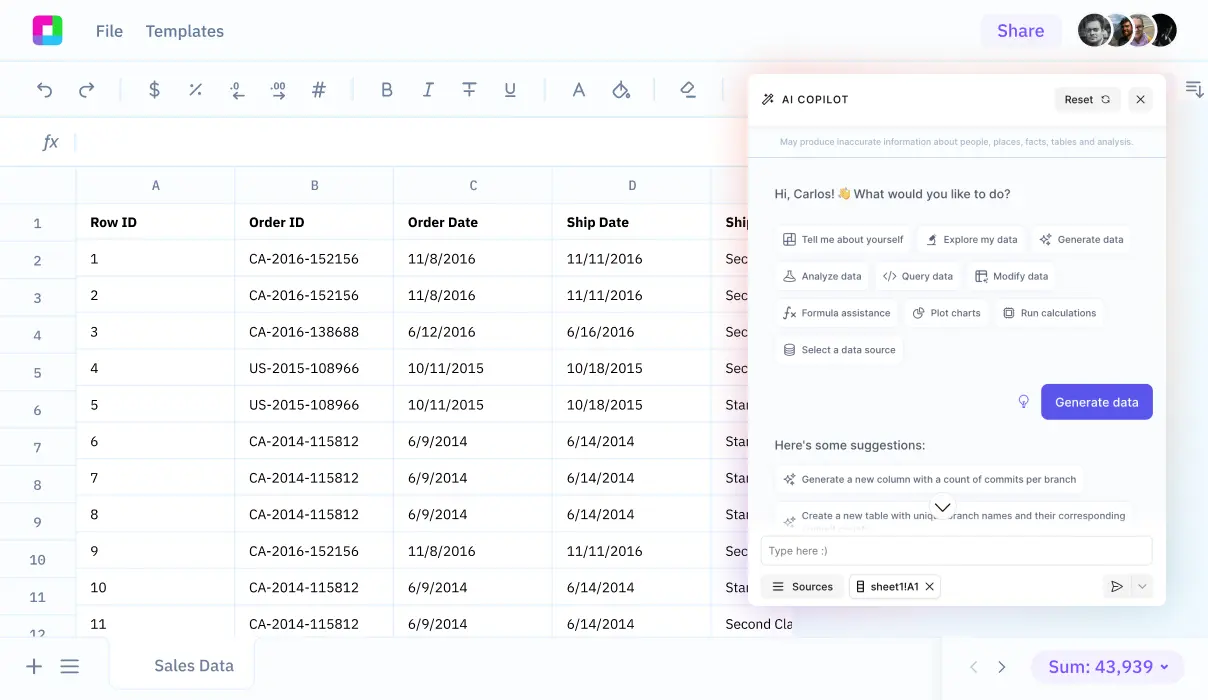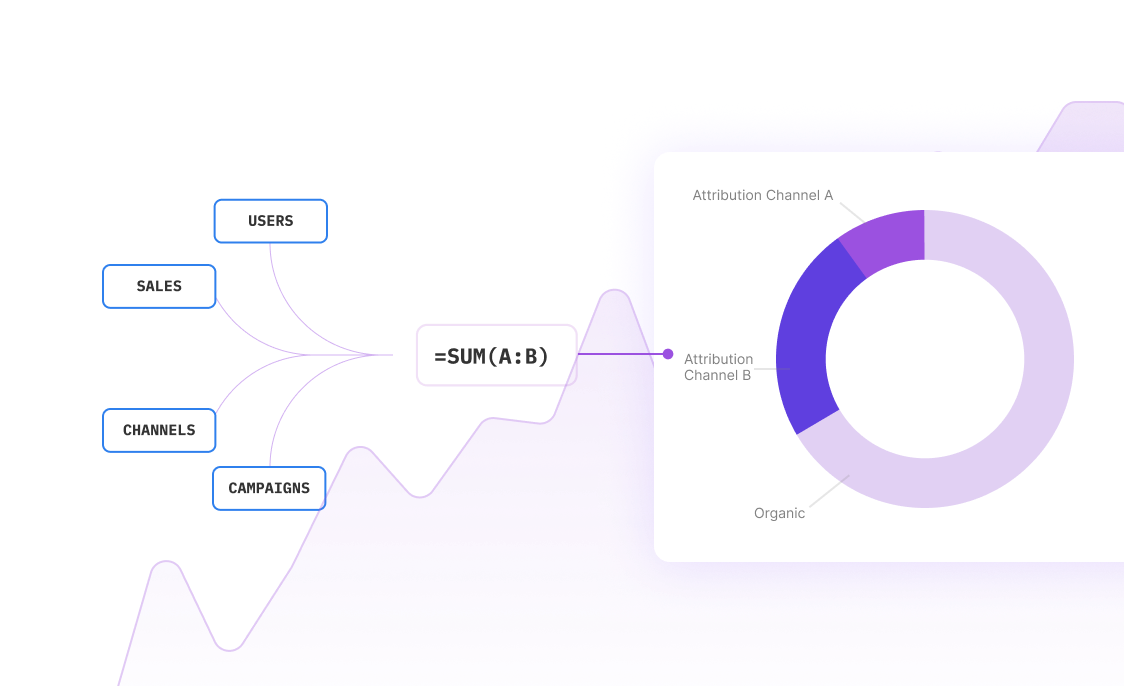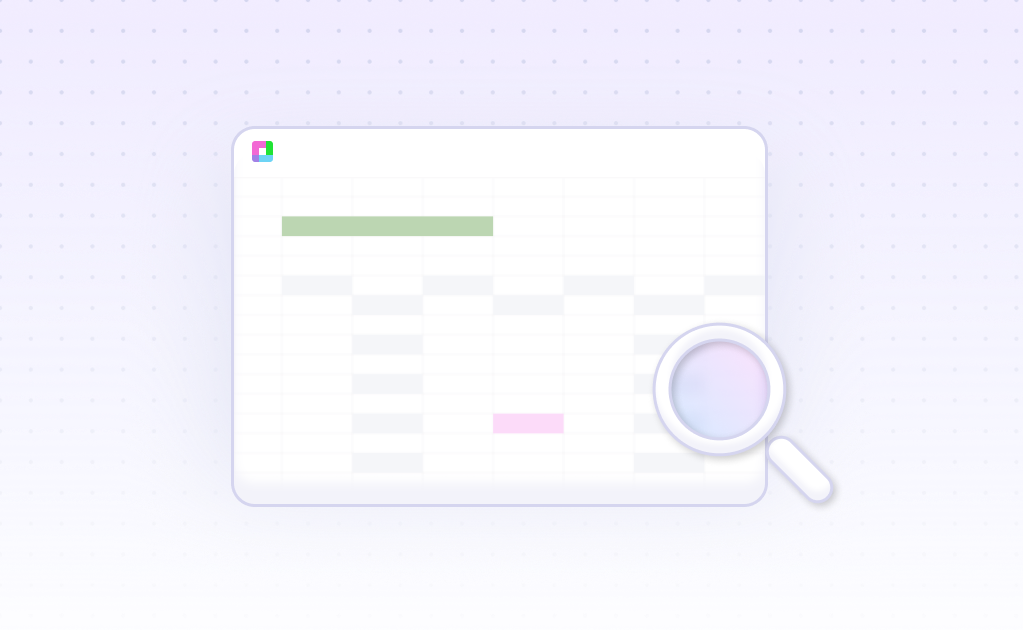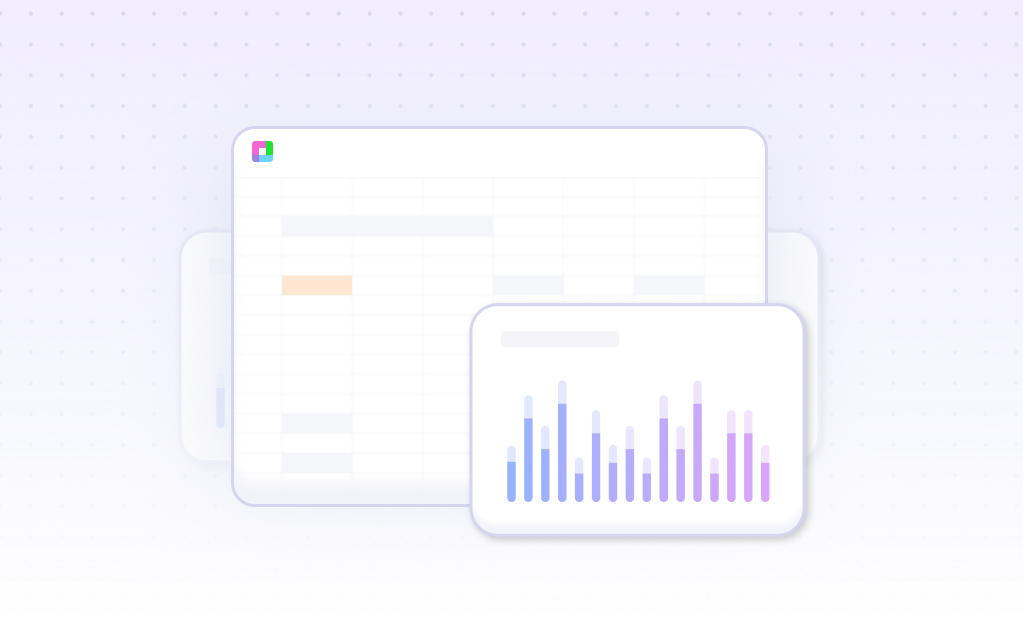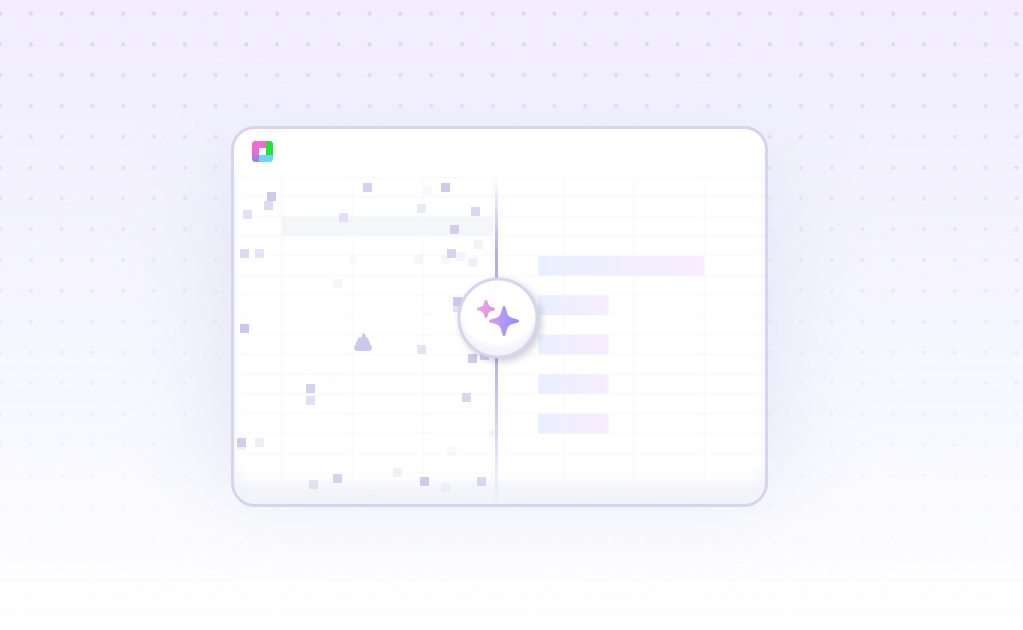
Introduction
Financial time series analysis in Excel provides powerful tools for forecasting and regression analysis. Excel's capabilities include ARIMA, Holt-Winters, and LOESS methods, along with statistical validation through RMSE and Lin's CCC. Feature extraction serves as a cornerstone of time series analysis, enabling dimensionality reduction and improved interpretability.
While Excel offers comprehensive analysis options, AI-powered alternatives streamline the process. AI tools increase productivity, automate data cleaning, and enhance forecast accuracy. These tools analyze complex datasets faster and uncover insights that traditional methods might miss.
Financial analysts seeking efficient time series analysis can explore Sourcetable, an AI-powered solution that combines Excel's functionality with advanced automation. Learn how Sourcetable simplifies financial time series analysis at sourcetable.com/signup.
Financial Time Series Analysis with Sourcetable
Excel's pivot tables provide basic data summarization capabilities, but modern financial time series analysis demands more sophisticated tools. While Excel can create presentation tables from source data, it lacks the advanced capabilities needed for comprehensive financial analysis.
Sourcetable combines Excel's familiar spreadsheet interface with AI-powered natural language processing, enabling users to conduct complex financial time series analysis through simple queries. Unlike Excel, Sourcetable provides native support for Python, SQL, and JavaScript, essential languages for implementing advanced financial models.
Financial analysts working with models like MCMC, Gibbs Algorithm, and Bayesian statistics require tools beyond Excel's capabilities. Sourcetable's integrated AI allows users to generate precise code for these complex analyses while maintaining a collaborative environment where teams can work simultaneously on data analysis and visualization.
The real-time collaboration features in Sourcetable enable teams to analyze financial time series data more efficiently than Excel's more limited sharing capabilities. Users can generate insights simultaneously and create sophisticated visualizations using natural language commands, streamlining the analysis workflow.
Financial Time Series Analysis Benefits with Sourcetable vs Excel
Time series analysis enhances financial forecasting accuracy by identifying trends, seasonal patterns, and noise in financial data. Understanding these components leads to more precise financial predictions and better decision-making.
Traditional Excel Analysis Workflow
Excel-based analysis requires manual structuring of source data into tables, followed by creating separate summary tables. While pivot tables help summarize data, this process can be time-consuming and error-prone.
AI-Powered Sourcetable Advantages
Sourcetable's AI capabilities automate workflows and reduce manual errors in financial analysis. The platform increases efficiency and speed through autonomous operation and natural language processing, enabling faster data analysis and visualization creation.
This AI-driven approach streamlines service delivery and encourages innovation in financial analysis workflows. The automation of routine tasks empowers more strategic decision-making while maintaining analytical accuracy.
Financial Time Series Analysis with Sourcetable: A Modern Excel Alternative
Sourcetable's AI-powered platform enables advanced financial time series analysis for revenue, expenses, and key metrics forecasting. By integrating SQL and Python capabilities, it provides deeper analytical insights than traditional spreadsheet tools.
Automated Financial Analysis Features
The platform automates critical financial analysis workflows, including data cleaning and formula generation for functions like SUM and VLOOKUP. This automation reduces human error while accelerating insight discovery for financial planning and analysis teams.
Interactive Financial Reporting
Sourcetable automatically generates interactive reports and charts for time series analysis. These visualizations help track financial metrics, forecast trends, and develop investment strategies with improved accuracy.
Real-Time Data Processing
Through automated data cleaning and categorization, Sourcetable enables real-time financial analysis and scenario planning. This capability allows teams to focus on strategic growth initiatives rather than manual data processing.
Financial Time Series Analysis Use Cases with Sourcetable
Large-Scale Sales Forecasting |
Process multi-gigabit CSV files of historical sales data to predict future revenue trends using AI-driven analysis. Automatic data syncing ensures forecasts remain current with the latest market information. |
Customer Churn Analysis |
Query historical customer behavior data through SQL to identify patterns indicating potential customer departures. Leverage AI-powered predictive analytics to forecast which customers are at risk of leaving. |
Multi-Dimensional Financial Modeling |
Utilize Sourcetable's 3D and 4D data capabilities to create complex financial models incorporating time series data across multiple variables. Run vector transformations for sophisticated trend analysis. |
Automated Financial Reporting |
Connect to databases and CSV files to generate self-updating financial reports. The AI assistant interprets data trends and answers queries about financial metrics, while cloud computing ensures rapid processing of large datasets. |
Frequently Asked Questions
What is financial time series analysis and why is it important?
Financial time series analysis is a dynamic approach to understanding financial data that plays a pivotal role in financial compliance. It is particularly important because it enables accurate and timely monitoring of financial activities for anti-money laundering (AML), fraud prevention, and regulatory compliance reporting.
What are the main applications of time series analysis in finance?
Time series analysis is used for transaction monitoring, customer risk profiling, anomaly detection, predictive analytics in fraud detection, behavioral analysis for KYC/AML, sanctions monitoring, real-time alerts, and trend analysis for market abuse.
How can Sourcetable help with financial time series analysis?
Sourcetable is an AI-driven tool that automates complex spreadsheet tasks and offers formula generation, data analysis, and chart creation. It integrates with over 100+ platforms and databases, making it particularly useful for financial modeling and forecasting.
Conclusion
Excel offers robust time series analysis capabilities through built-in functions and add-ins like Real Statistics. Users can perform forecasting using methods such as ARIMA, Holt-Winters, LOESS, and SPLINE, while validating results with statistical measures like RMSE and Lin's CCC. Excel's functionality extends to multiple parameter regression, rolling statistics, and log-linear analysis of time series data.
For those seeking an AI-powered alternative, Sourcetable combines spreadsheet functionality with advanced artificial intelligence. Its natural language interface and integration with over 100 data sources streamline financial analysis tasks. Sourcetable accelerates formula creation, charting, and data cleaning without requiring extensive Excel expertise. Experience streamlined financial time series analysis by signing up at sourcetable.com/signup.
Recommended Analysis Guides
Connect your most-used data sources and tools to Sourcetable for seamless analysis.
Frequently Asked Questions
If you question is not covered here, you can contact our team.
Contact Us
